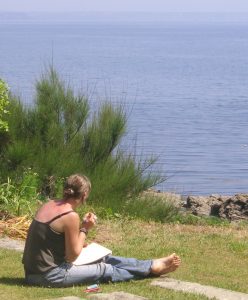
Sarah Lee is the founder of the prize-winning luxury travel blog LiveShareTravel, co-founder of Captivate, a group of leading British digital storytellers, and UK Director of the international blogger collective iAmbassador.
What’s your greatest satisfaction in running a travel blog?
Simply, it’s that I get to write and share ideas on my favourite topic every day. To elaborate, I adore travel – really digging deeper into a place and its people and culture and unearthing some quirks alongthe way – it’s what makes the world so fascinating. I love then being able to convert that into video or editorial that tells a story and inspires someone to go and book that same trip. We’ve had readers book their honeymoon to Borneo on our recommendation– staying at the exact same hotel as us. Others have taken a tour around Tuscany’s Chianti region because they saw our video of it and this captured their imagination. Though our luxury travel blog has lots of stories about destinations and upscale experiences you can have when you’re there, we also have a focus on affordable luxury travel, as we appreciate that not everyone has a first-class budget. And I love the fact that using our guides and tips, our readers have saved money, allowing them to travel more often and further afield.
Can you give us two practical tips for building a commercially viable travel blogsite?
1. Start your site with a strategy and a business approach and it will pay dividends. It’s one thing starting a site as a hobby, but if you are serious about blogging, you can make it a viable career. However, you need to be business-minded and start with a strategy – know who your target audience is, find out what motivates your target market to travel and what they like to do when they are there, and produce good-quality editorial on subjects that will appeal to them.
2. Recognise that as fun and as seemingly glamorous as the job is, it takes a lot of work to succeed. There are no shortcuts to success – some people have cheated along the way, but it never pays off and they have always been found out. So be prepared to put in countless hours and know that it will take months, perhaps even two or three years, before you feel as though you have some level of success.
What are the current options for monetising a travel blog?
There are so very many that in some respects they are only limited by your imagination. Here are the main ways bloggers are earning money right now:
- Affiliate programmes – either with an ad network like Mediavine, or with sites like Booking.com or Amazon.
- Creative campaigns where you work with destinations and brands to set deliverables (for example, a set number of editorial posts, social media posts or videos).
- Brand ambassadorships, where you are sponsored by a brand to produce content on them or perhaps undertake events or run workshops for them.
- Selling your own products, whether it’s guided tours, branded merchandise, books, your photography, etc.
- Selling other freelance services. Some bloggers use their blogs as a portfolio of their editorial, photography or video work. They may also have other skills such as SEO, graphic design, social media or consultancy, which they promote through their blogs.
- These are really just a few. The most important thing, though, is to create a portfolio business and not just settle for one source of income.
Is travel blogging a bubble that is going to burst?
No. There is a very low threshold of entry to travel blogging – it seems as though almost anyone can start one up, with limited knowledge or skills in traditional areas of media production (such as experience in editorial, photography or videography). But only the best bloggers will survive as audiences become more and more demanding of quality. There are thousands of blogs, but they have just become part of the broader fabric of media, and often people don’t even recognise that they’re reading a blog, because they have evolved so much from what they started out as.
For instance, the diary-style format of early blogs is now largely a thing of the past and bloggers are creating more detailed, magazine-style editorial, that sits perfectly well alongside mainstream media sites, and in some cases challenges them. Bloggers have developed expertise in a broad range of areas that can be difficult for mainstream publications to compete with. Added to that, many bloggers have become personalities that their readers are invested in. They enjoy connecting with them – seeing what they are doing and reading their opinions, in a way that they don’t engage with mainstream publications.
Finally, you only need look at the investment in blogs, and growth of big publishing platforms, to see that blogging is very much alive and well.
Extract from The Travel Writer’s Way, copyright Jonathan Lorie 2019.
